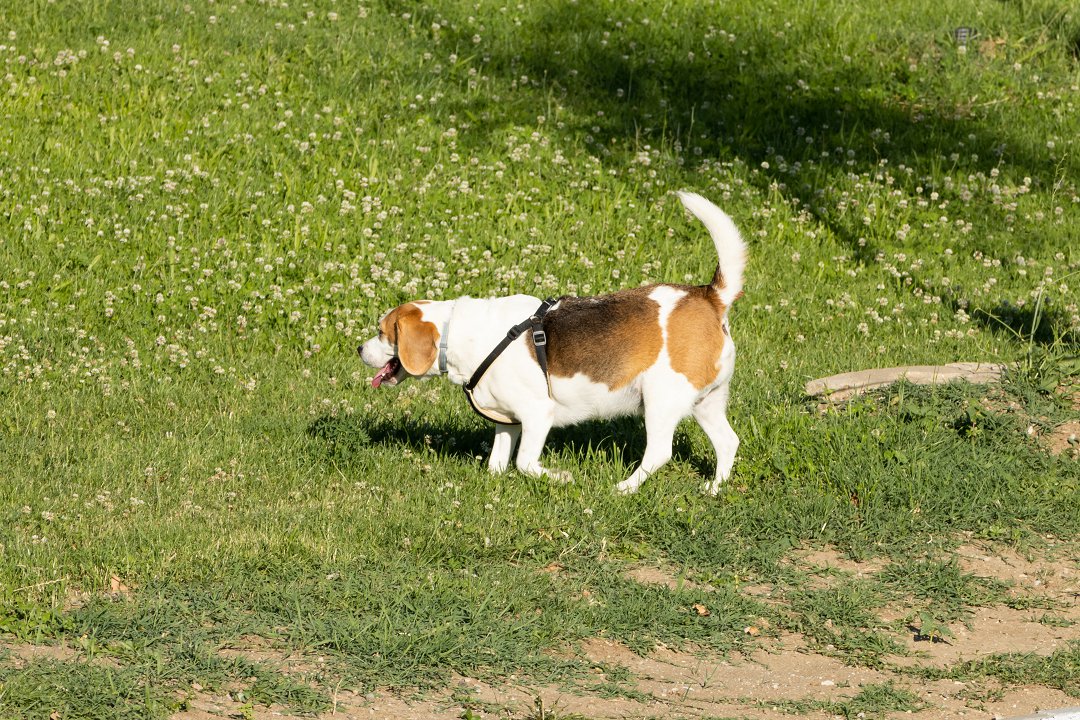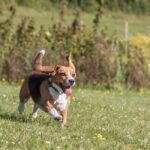Table of Contents
- 1 Introduction: Understanding Negative Reinforcement in Beagle Training
- 2 Effective Techniques for Using Negative Reinforcement to Teach Beagles to Sit
- 3 Exploring the Role of Negative Reinforcement in Beagle Training
- 4 FAQs About: Negative Reinforcement
- 4.1 Can negative reinforcement be an effective training method for beagles?
- 4.2 negative reinforcement the same as punishment?
- 4.3 How can I use negative reinforcement to teach my beagle to sit?
- 4.4 Should I only use negative reinforcement in beagle training?
- 4.5 How can I ensure that I am using negative reinforcement correctly in beagle training?
- 4.6 Can negative reinforcement harm my beagle’s well-being?
Introduction: Understanding Negative Reinforcement in Beagle Training
Have you ever wondered how negative reinforcement plays a role in training your Beagle? Negative reinforcement is a powerful tool that can be used to teach your furry friend new commands and behaviors. In this article, we will delve into the concept of negative reinforcement and its effectiveness in Beagle training.
Negative reinforcement involves removing an unpleasant stimulus to reinforce desired behaviors. It is important to understand that negative reinforcement is different from punishment. Instead of focusing on punishment, negative reinforcement focuses on rewarding your Beagle for correct actions. By using this technique, you can effectively teach your Beagle to sit on command and other obedience skills. In the next section, we will explore effective techniques for using negative reinforcement to teach your Beagle to sit. So, let’s dive in and discover how negative reinforcement can enhance your Beagle’s training experience.
Effective Techniques for Using Negative Reinforcement to Teach Beagles to Sit
Teaching a beagle to sit is an essential command that every dog owner should focus on during their training sessions. Negative reinforcement can be an effective technique to achieve this goal. By using this training method, you can encourage your beagle to sit on command while avoiding the use of punishment or force. Here are some effective techniques for using negative reinforcement to teach beagles to sit:
1. Start with positive reinforcement
Before introducing negative reinforcement, it is crucial to establish a foundation of positive reinforcement. Begin by rewarding your beagle with treats and praise every time they sit voluntarily. This positive association will make them more receptive to the training process.
2. Introduce the negative reinforcement cue
Once your beagle understands the concept of sitting and is consistently responding to positive reinforcement, it’s time to introduce the negative reinforcement cue. This can be a gentle tug on their leash or a verbal command such as “sit.” The negative reinforcement cue should be distinct from the positive reinforcement cue.
3. Apply negative reinforcement
When your beagle fails to sit after the negative reinforcement cue, apply gentle pressure on their leash while repeating the command. The pressure should be released as soon as they comply and sit down. This creates a negative association with not sitting and a positive association with sitting.
4. Repeat and reinforce
Consistency is key when using negative reinforcement. Repeat the process multiple times during each training session, gradually reducing the amount of pressure needed on the leash. As your beagle becomes more familiar with the command, you can gradually phase out the negative reinforcement and rely solely on positive reinforcement.
5. Use rewards
To reinforce the desired behavior, always reward your beagle with treats and praise when they sit on command. This positive reinforcement will further motivate them to obey the command in the future.
By using these effective techniques for using negative reinforcement to teach beagles to sit, you can establish a strong foundation of obedience and command understanding. Remember to be patient and consistent throughout the training process. With time and practice, your beagle will become proficient at sitting on command, making your training sessions more successful and enjoyable for both of you.
Exploring the Role of Negative Reinforcement in Beagle Training
Negative reinforcement is an essential concept in beagle training that plays a significant role in shaping their behavior and teaching them new commands. It involves removing an unpleasant stimulus to reinforce a desired behavior. By understanding how negative reinforcement works and implementing it effectively, you can train your beagle to be obedient and well-behaved.
The Basics of Negative Reinforcement
Negative reinforcement works by associating a specific behavior with the removal of an aversive stimulus. When your beagle performs the desired action, you remove something unpleasant, which increases the likelihood of them repeating that behavior in the future. For example, if your beagle sits when commanded, you can stop applying pressure on their leash, which serves as the aversive stimulus. This removal of pressure acts as a reward and reinforces the sitting behavior.
Benefits of Negative Reinforcement
- Builds trust and strengthens the bond: By using negative reinforcement techniques, such as leash pressure release, you can establish trust with your beagle. They learn that following your commands leads to a more comfortable and pleasant experience, enhancing your relationship.
- Clear communication: Negative reinforcement provides clear communication to your beagle about what behavior is expected from them. By consistently applying negative reinforcement to reinforce desired actions, you can effectively teach them obedience commands, such as sitting, staying, or coming when called.
- Encourages problem-solving: Negative reinforcement also encourages your beagle to think and problem-solve. When they realize that performing a certain action leads to the removal of an unpleasant stimulus, they become motivated to find the right behavior to avoid discomfort.
Combining Negative and Positive Reinforcement
While negative reinforcement has its benefits, it is crucial to balance it with positive reinforcement techniques. Positive reinforcement involves rewarding desired behaviors with treats, praise, or playtime. By combining both types of reinforcement, you can create a well-rounded training approach that motivates your beagle and strengthens their understanding of commands.
Training Tips for Using Negative Reinforcement
- Timing is key: To effectively use negative reinforcement, it is crucial to provide the aversive stimulus immediately after the undesired behavior and remove it promptly when your beagle performs the desired action.
- Consistency is essential: Be consistent in your use of negative reinforcement. Apply it every time your beagle displays the undesired behavior and promptly remove the aversive stimulus when they perform the desired behavior.
- Gradual progression: Start with mild aversive stimuli, such as gentle leash pressure, and gradually increase intensity if needed. Always prioritize your beagle’s comfort and well-being during training sessions.
By understanding the role of negative reinforcement in beagle training and implementing it correctly, you can effectively shape their behavior and teach them essential obedience commands. Remember to combine it with positive reinforcement and always prioritize your beagle’s well-being throughout the training process.
FAQs About: Negative Reinforcement
Can negative reinforcement be an effective training method for beagles?
Negative reinforcement can be an effective training method for beagles, as it involves removing an unpleasant stimulus when the desired behavior is displayed. It helps to reinforce the desired behavior and encourages the beagle to repeat it in order to avoid the unpleasant stimulus.
negative reinforcement the same as punishment?
No, negative reinforcement is not the same as punishment. Negative reinforcement involves removing an unpleasant stimulus when the desired behavior is exhibited, while punishment involves applying an unpleasant stimulus to discourage unwanted behavior. Negative reinforcement focuses on reinforcing desired behavior, while punishment focuses on discouraging unwanted behavior.
How can I use negative reinforcement to teach my beagle to sit?
To use negative reinforcement to teach your beagle to sit, you can start by applying gentle pressure on their hindquarters while giving the “sit” command. Release the pressure once they sit down and reward them with praise or a treat. Over time, your beagle will associate sitting with the release of pressure and the reward, reinforcing the behavior.
Should I only use negative reinforcement in beagle training?
No, it is important to have a balanced approach to beagle training. While negative reinforcement can be effective, it should be used in conjunction with positive reinforcement. Positive reinforcement involves rewarding desired behavior with treats, praise, or affection. Combining both methods can help create a well-rounded training experience for your beagle.
How can I ensure that I am using negative reinforcement correctly in beagle training?
To ensure you are using negative reinforcement correctly in beagle training, it is crucial to clearly define the desired behavior and the unpleasant stimulus you will be using. Consistency is key, so make sure to apply the negative reinforcement immediately and consistently when the desired behavior is displayed. It is also important to monitor your beagle’s response and adjust the intensity of the stimulus accordingly, ensuring it is not too harsh or overwhelming.
Can negative reinforcement harm my beagle’s well-being?
When used correctly and responsibly, negative reinforcement should not harm your beagle’s well-being. However, it is important to use it sparingly and avoid excessive or harsh punishment. Always prioritize your beagle’s safety and well-being, and consult with a professional dog trainer if you have any concerns or need guidance on using negative reinforcement effectively.






Leave a Reply